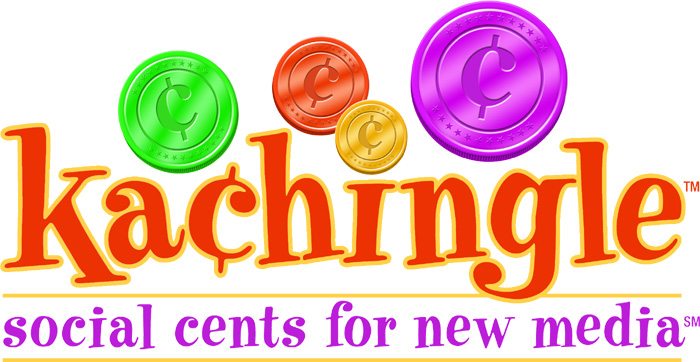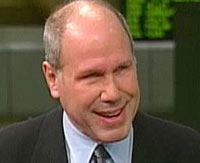 So what are they thinking at The New York Times Co.? Having failed to sell its New England properties last year at an asking price that was reportedly 97% below what the Times Co paid for the Boston Globe and Worcester Telegram & Gazette in 1993, the company has now settled on splitting the Globe into two parts: one paid and the other free.
So what are they thinking at The New York Times Co.? Having failed to sell its New England properties last year at an asking price that was reportedly 97% below what the Times Co paid for the Boston Globe and Worcester Telegram & Gazette in 1993, the company has now settled on splitting the Globe into two parts: one paid and the other free.
According to an account in Editor & Publisher:
Whereas Boston.com will continue to offer breaking news, sports, and weather from various sources, along with classified advertising, social networking, and information about travel, restaurants and entertainment, BostonGlobe.com will be designed to mirror the experience of reading the paper’s print edition. It will contain all the reports from the day’s paper as well as exclusive reports, in-depth news, analysis, commentary, photos and graphics, plus video and interactive features.
What does this mean? Will Boston.com become a My Yahoo-like text portal with wire feeds and little else? Will all of the material produced by the paper’s staff of reporters and photographers migrate to the paid edition but not be available to non-paying subscribers? How will those staffers feel about reaching a smaller audience? Will paid subscribers get anything more than an online version of the print edition? If so, why wouldn’t they just choose to receive the print edition in the first place and skip the whole online hoohah?
The answers to these questions will no doubt emerge in the nine months or so that the Globe has to consider its transition. Staffers will be watching the experience of their corporate parent as it imposes a pay wall at nytimes.com in January. BTW, we haven’t heard a whole lot about the plans for that experiment in recent months. We assume it’s still on.
We are on record as believing that paywalls will not work to salvage or grow the newspaper industry, but we also believe that the New York Times Co.’s strategy in this case is sound. Basically, management has recognized that trying to rejuvenate the print operation is futile, so it’s better to manage it into the ground as profitably as possible. This means raising subscription rates, erecting pay walls, holding the line on advertising prices for existing customers and generally trying to squeeze every last dollar out of the print operation that it can. It’s called milking the cash cow, and it’s a tried-and-true business strategy.
It is also a strategy of capitulation. The Boston Globe will never again see growth in its print edition, so the best it can do is to wring profits out of the dwindling number of subscribers it has. Publishers are learning that over in London right now, where online readership of the Times fell 7.6% between July and August. Page views dipped 22% and time spent on site fell 16%. Some of this was no doubt due to the summer holiday, but the evidence is becoming abundant that pay walls significantly reduce traffic. The question is whether the incremental revenue offsets the corresponding declines in readership. No one has an answer yet, but it appears that newspaper publishers are increasingly willing to admit that print has no future and trying to get what they can out of a dying franchise. Believe it or not, than is healthy.
In the case of the Globe, The Times Co. will hopefully plow profits from paid subscriptions back into new properties that have the potential for growth, but it may choose to do something else instead. In the meantime, the message from the Globe’s move is that print is dead, resuscitation efforts are futile and those who still value print are going to pay for the privilege of receiving it. Not a bad strategy at all. At least it’s realistic.
Miscellany
Staffers at the Globe and elsewhere might want to look at the experience in Pittsburgh, where the Post-Gazette‘s PG+ is reportedly profitable and figuring out a sustainable business. The secret sauce in the publishing realm is sports, which motivates fans in the Steel City to fork over dollars in exchange for the latest information about local stars. However, a more important development may be the Web property’s shift into new areas of revenue such as sponsored events. “Those events have included a Post-Gazette “summer camp” featuring classes on fly fishing and cooking, as well as higher-brow discussions of the midterm elections,” writes Poynter’s Bill Mitchell. Hmmm… diversifying revenue. Where have we heard that before?
Did we really say that print is dead? Well The Wall Street Journal’s print advertising revenue jumped 21% in the just-completed quarter compared to the year-ago period, according to a memo from Dow Jones CEO Les Hinton. Online revenue was up, too. Those are impressive numbers, but one month does not a trend make.
Did we really say that print is dead? The Richmond (Mo.) News will reduce its print frequency from daily to twice weekly. Beginning Oct. 18, the 96-year-old News will be published on Monday and Thursday afternoons.
Slate’s Jack Shafer writes entertainingly about the history of the op-ed page, a 40-year-old invention often credited to The New York Times. Not surprisingly, the idea of portraying opposing viewpoints directly across from a newspaper’s editorial page has many fathers, given that it “has undoubtedly been one of the great newspaper innovations of the century,” in the words of John B. Oakes, a Times editorial board member who proposed the concept in the late 1950s. Oakes says the idea was his, but others who were at the Times dispute that, and other papers used similar vehicles as early as the 1920s. The Times‘ move to action was actually spurred by the death of the New York Herald Tribune in 1966, which removed a major conservative voice from the market. Editors realized there was an opportunity in dissent, and began openly soliciting prominent foes to write for their pages. This turned out to be a good business decision, since public figures write for cheap and the Times was able to realize an immediate advertising windfall. The concept was quickly picked up by other newspapers and became a staple. It’s hard to believe that something we accept so easily today was the subject of so much controversy a few decades ago.
They’re on a bit of a roll over at Verve Wireless, which just raised $7 million for development and expansion of its local ad network and publisher platform. Among the investors are The Associated Press. Verve creates apps to deliver news to mobile devices. In addition to contracts with McClatchy, Belo Interactive and The AP. the company was selected earlier this year by the Audit Bureau of Circulations to measure the audience on mobile applications, mobile browsers and tablets. Verve Wireless claims that 750 publishers worldwide are using its apps.
And Finally…
Publishers could do worse than to rely upon the genius of their reporters. In Chicago, Sun-Times reporter Kara Spak won a “Jeopardy” quiz show to the tune of $24,001. In response to a question about an 1863 poem that mentions “the eighteenth of April in Seventy-Five,” Spak correctly identified the source as “The Midnight Ride of Paul Revere.” We don’t believe her employer requires her to contribute her winnings to the company pension fund. Had she worked for Tribune Co., we’re not so sure that would have applied.



 . The 61-year-old veteran Newsweek reporter and MSNBC news analyst
. The 61-year-old veteran Newsweek reporter and MSNBC news analyst 















